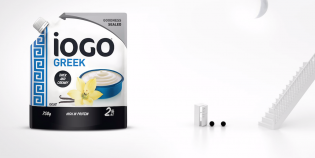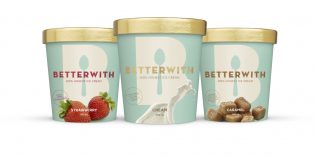Nimble, niche and unfettered by legacy-media thinking
Michael MacMillan doesn’t call his company revolutionary, but its strategy fits the bill.
Born just two years ago during a sea change in the media space that saw the multi-screen viewing experience become reality and the continuation of intense industry consolidation, Blue Ant Media has successfully unearthed opportunities around Canadians’ changing consumption habits as both a content creator and distributor.
How so? For starters, it specializes in a small selection of categories that attract appealing demographics—the kind that can afford cottages and travel. It also produces and puts out content on several platforms and isn’t shackled to any particular medium. Plus, Blue Ant has proven it can offer advertisers content marketing that takes advantage of this strategy to deliver on a spectrum of consumer touch points.
And it’s done all of this with a small staff compared to those at the vertically integrated behemoths it’s up against. At 108 employees, Blue Ant runs a tight ship. Or rather, as Raja Khanna, the company’s CEO, television and digital, calls it, “a little tiny canoe in a river full of gas tankers.”
Canoes, of course, can maneuver faster than tankers, which has allowed Blue Ant to be nimble in keeping pace with the virtually non-stop changes in media and viewing habits. So when tablet use soared, for instance, Blue Ant wasn’t forced to sit and watch the competition capitalize on the new screen: it launched its own tablet-only magazine to quickly get in on the action. “We aren’t beholden to the old status quo,” says CEO MacMillan. On the contrary, he says the company wants to be “indifferent” to which platform it uses to share its content.
Blue Ant, which MacMillan started with longtime business partner Seaton McLean in Toronto in January 2011, uses an approach that’s the antithesis of the antiquated media model of one-to-many communications. The company doesn’t want to shout its content to the masses; it wants to make connections and engage with consumers around a handful of particular areas—such as music, travel, lifestyle and entertainment—through whichever media they’re likely to fancy. Blue Ant’s style is more like gathering a few good friends at the bar to chat in a booth.
And, in this case, a lot of those friends are affluent. For instance, the four premium HD channels—Oasis HD, radX, HIFI and eqhd—that Blue Ant added to its roster when it acquired High Fidelity HDTV are aimed squarely at educated, management-level boomers. As of October 2012, these channels counted a combined total of roughly 2.1 million national subscribers. Rather than being all things to all viewers, Blue Ant’s goal is to focus on specific areas that attract passionate fans or aficionados with healthy savings accounts.
Roughly 60 hours of the programs and interstitials airing on those four channels this fiscal year were produced in-house; the rest of the programming is a mix of original content from Canadian producers, acquisitions from international suppliers and coproductions with international partners.
Jay Switzer, executive chair of independent media company Hollywood Suite and former CHUM president and CEO, says Blue Ant is smart to concentrate on a selection of precise categories. He says it makes sense to be “doing a few things and doing those few things well, then being known for those few things.”
Switzer is also former chair of the board of directors at GlassBox Television. It’s the integrated media company that acquired Travel + Escape from CTV in late 2010. Blue Ant subsequently acquired a controlling interest of GlassBox in April 2011 in the deal that put Blue Ant on the media map. Switzer has no ongoing business connections with the company, but remains a huge fan.
He notes that Blue Ant has an advantage in not having to protect a legacy business. While Switzer applauds the way giant vertically integrated companies connect with audiences digitally, he says it comes at the expense of their heritage business. A lot of the biggies, says Switzer, are in defensive mode and “spend the morning deciding what to do and then the afternoon worrying about how it’s going to hurt their existing business.”
To its credit, Blue Ant can’t relate. Chris Diceman, chairman and founder of DiceMark Capital Advisors, observes how the company isn’t tied to hundreds of years of working in a certain medium. He believes Blue Ant stands out amidst other media players in Canada in an age when newspaper groups are struggling to become less focused on the medium and more on transforming themselves into content companies.
“It seems like [Blue Ant is] really piecing together something that has a good shot as they’re not tied to a legacy business as some of the other media players in Canada,” says Diceman, who has followed the communications and media industries for more than a decade—previously in a senior analyst role at debt-ratings agency DBRS.
 He also notes that Blue Ant’s acquisitions show its focus on bringing together content in specific genres for specific demographics and distributing it in traditional and new ways. It has quickly amassed a strong roster of eight specialty channels—Bite TV, Aux TV and Travel + Escape, the four channels from High Fidelity HDTV, and Bold (see sidebar, “What’s on at Blue Ant,” pg. 39)—and related websites, as well as print and tablet publications and even events.
He also notes that Blue Ant’s acquisitions show its focus on bringing together content in specific genres for specific demographics and distributing it in traditional and new ways. It has quickly amassed a strong roster of eight specialty channels—Bite TV, Aux TV and Travel + Escape, the four channels from High Fidelity HDTV, and Bold (see sidebar, “What’s on at Blue Ant,” pg. 39)—and related websites, as well as print and tablet publications and even events.
Take Blue Ant’s recent purchase of Cottage Life Media, in which it had previously owned a minority stake. The Cottage Life brand extends onto as many platforms as there are trout lures in a bait shop. It has print publications, websites, books, social media apps, a television series and consumer shows. Blue Ant is trying to cover every way people might want to access things related to the cottage lifestyle, says David Holland, president and CEO of Torstar, which acquired a 25% ownership stake in Blue Ant in December 2011. “I think [MacMillan] wants to develop a reputation for ‘This is the place to go for this’ and that will probably prove to be important,” says Holland.
Proving that content does indeed come first to the company, Blue Ant launched the aforementioned tablet-only magazine from its Aux music brand in June. With a fresh and colourful design, Aux Magazine combines style with substance and has been downloaded roughly 140,000 times; it finished 2012 on a high note, winning the Music Magazine of the Year award at the Digital Magazine Awards and Best in Tablet Applications at NextMedia’s Digi Awards in December.
There’s more! To read the full story of Blue Ant’s amazing year, pick up the latest issue of Marketing by subscribing to either our print magazine or our iPad edition.
To read more about our Agency of the Year and Marketer of the Year, as well our list of 30 finalists, visit Of The Year 2012.












